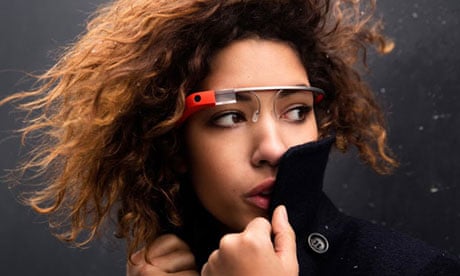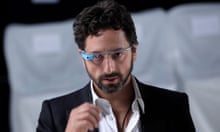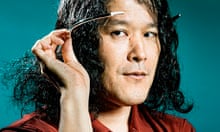You're at work, reading a dashboard displaying data from the tracking device you've been wearing to improve your health. Your sleeping, eating and exercise habits have improved, but you've noticed a worrying pattern. Every day from 2-2.30pm, for the past two months, your wristband device has indicated increased levels of stress, as measured by perspiration.
The dashboard notes changes in your "little data" – granular information about your health – and lists potential diagnoses so you can take action. In this case, stress could lead to hypertension and high blood pressure. Looking at your calendar, you realize why those 30 minutes are fraught with such tension. Your new manager – we'll call him Bob – demeans you during daily meetings, comparing you to colleagues in an attempt to raise productivity. Visible on your screen are the results of his tactics: they're undermining your efforts to improve your health.
Two weeks later you're standing with a group of colleagues in your CEO's office. You produce a report showing three months of data proving you're all suffering similar, adverse health effects. Timestamps indicate tension spikes directly correlating to visits from Bob.
"If Bob stays on as a manager, our health premiums will rise dramatically next year," you say to your CEO. "More importantly, unless things change, we'll all need to look for new jobs based on a simple fact as laid out in that report." You pause for effect.
"Bob is killing us."
We have the technology
This scenario might sound futuristic, but isn't as far-fetched as it seems. Someone at your office is probably already using a Fitbit or other wearable device that tracks health or other behavior. No longer a nascent sector occupied solely by Quantified Self enthusiasts, Dow Jones estimates the health-sensor market to surpass 400m devices and $4bn by 2014. The technology is already here; it's mainly privacy and protocol challenges that prevent the above scenario from happening today.
In fact, the dashboards, data output and health correlations described are standard for today's wearable sensors. Many organizations already are beginning to use them to help improve employees' health and wellbeing while lowering healthcare premiums.
It's a trend that's bound to make individuals less cavalier about how they currently share personal data. After all, health information holds intimate details that affect our economics, not just our privacy.
What's more, the vapor trail of data we're leaving about ourselves will soon be visible on devices we'll wear over our eyes and ears. In effect, we're becoming transhuman – using technologies to enhance physical or mental capabilities to the point where people and machines effectively become one.
We're essentially at that stage now, via ubiquitous smartphones. We're just under the illusion that, because these devices aren't part of us physically, they don't control us.
The transhuman employee
But technologies in the works today would integrate man and machine even further. In August, Google filed a patent for an advertisement-based system called Pay Per Gaze. Used in conjunction with a head-mounted device like Google Glass, the company hopes to charge advertisers when people wearing the device look at their ads. The patent also describes the next phase of the technology, "pay per emotion", where pupil dilation or other physiological responses to advertising stimuli would be measured in real time so Google can monetize your responses.
Instead of advertisements, devices in the workplace could monitor people's faces for visual cues to track employee sentiments throughout the day. Not engaged in a meeting? Your device could send a "see-mail" to your boss indicating your blood pressure slowed during a presentation indicating boredom.
Eye tracking could also be used to see if someone's gaze lingers inappropriately on the body parts of a colleague – leer too long and your data could appear in court. Whatever the behavior, the vapor trails we leave at relating to our emotions, health and character will soon be visible in ways they never have before.
While this type of work-based tracking may seem creepy, people are already measuring themselves for these types of insights. So the push to use these tools and methodologies is more likely to come from employees who don't want to stop using their devices during work hours than from a C-suite mandate.
"I have no doubt these types of things will happen," says Brian Wassom, an expert on augmented reality law and a partner at Honigman Miller Schwartz and Cohn LLP, a Michigan-based international business law firm. "People could also wear clothes with sensors to know which parts of their outfits are most appealing so they can gauge their wardrobes accordingly."
Your brain at work
This data could also be used to make work life more sustainable. For example, Neumitra, a Boston-based company, is developing wearable and mobile technologies that monitor the effects of stress on the brain's health and performance. The technologies aggregate health data to provide insights about when employees are at their best or when they need a break.
Neumitra's work is proving that working smarter means recognizing the fundamental limits and power of the greatest asset that knowledge workers possess – their brains. Neumitra founder Robert Goldberg explained:
"The number of hours a truck driver can be on the road is strictly limited, but staff at hospitals are pushed to work an insane number of hours and still be expected to be at their best."
Real-time data showing the balance of working efficacy and wellbeing could help leaders recognize when employees – and their productivity – would benefit more from a protein shake or a nap than longer nights at the office.
Rewards-based tracking provides another positive way for organizations to introduce these methods to employees. Take Allstate's Drivewise App as a precedent. It monitors customers' driving, alerting them of higher-risk behaviors and rewarding safe drivers with lower insurance rates. Drivers might've been expected to baulk at the idea of having their cars monitored, but the offer of lower rates – seven out of 10 drivers save money through the program – has attracted volunteers.
Similarly, offering rewards for improved behavior – on a voluntary basis – will be a primary way to make employees feel comfortable with sharing their personal data in the workplace.
A data with destiny
It would be a mistake to think that devices revealing data about health and behavior can be kept out of the workplace. As more people monitor various aspects of their health – from cholesterol levels to their number of steps each day – data is getting personal. It's inevitable that you'll soon see the impacts at work.
As these technologies and data become increasingly available, transhuman resource departments – in which human resource professionals help navigate the intersection of carbon and silicon in the workplace, balancing workplace productivity and ethics – will become standard.
The scenarios involving sensor-enabled devices and augmented-reality-visualization tools are endless. But now is the time for organizations to establish protocols regarding privacy, ethics and etiquette that make sense for their stakeholders. It's best to develop a vision for handling these issues now; otherwise, when the day of this data arrives, you may not like what you see.
John C. Havens is the founder of The H(app)athon Project and author of the upcoming book, Hacking Happiness – Why Your Personal Data Counts and How Tracking it Can Change the World






Comments (…)
Sign in or create your Guardian account to join the discussion